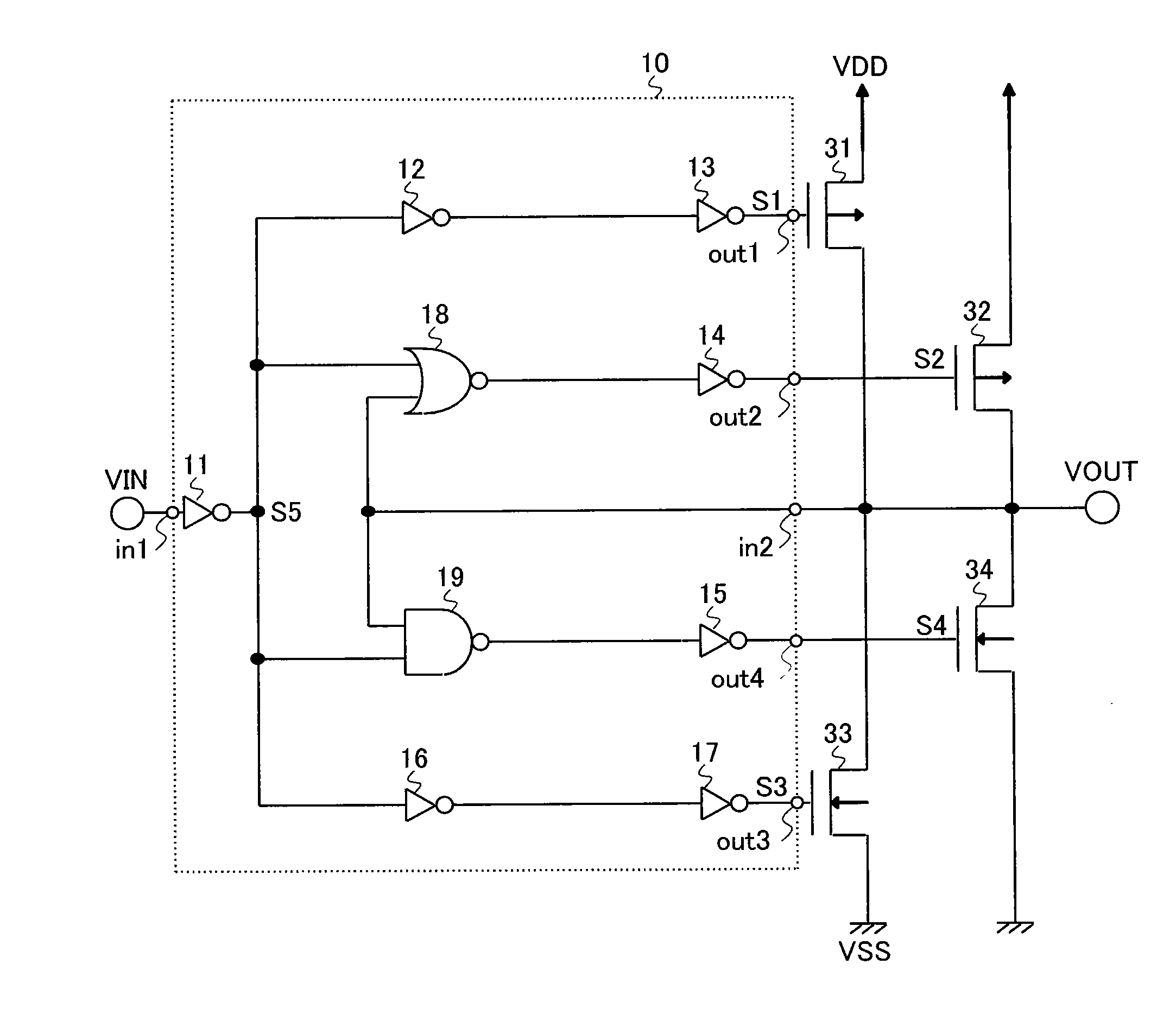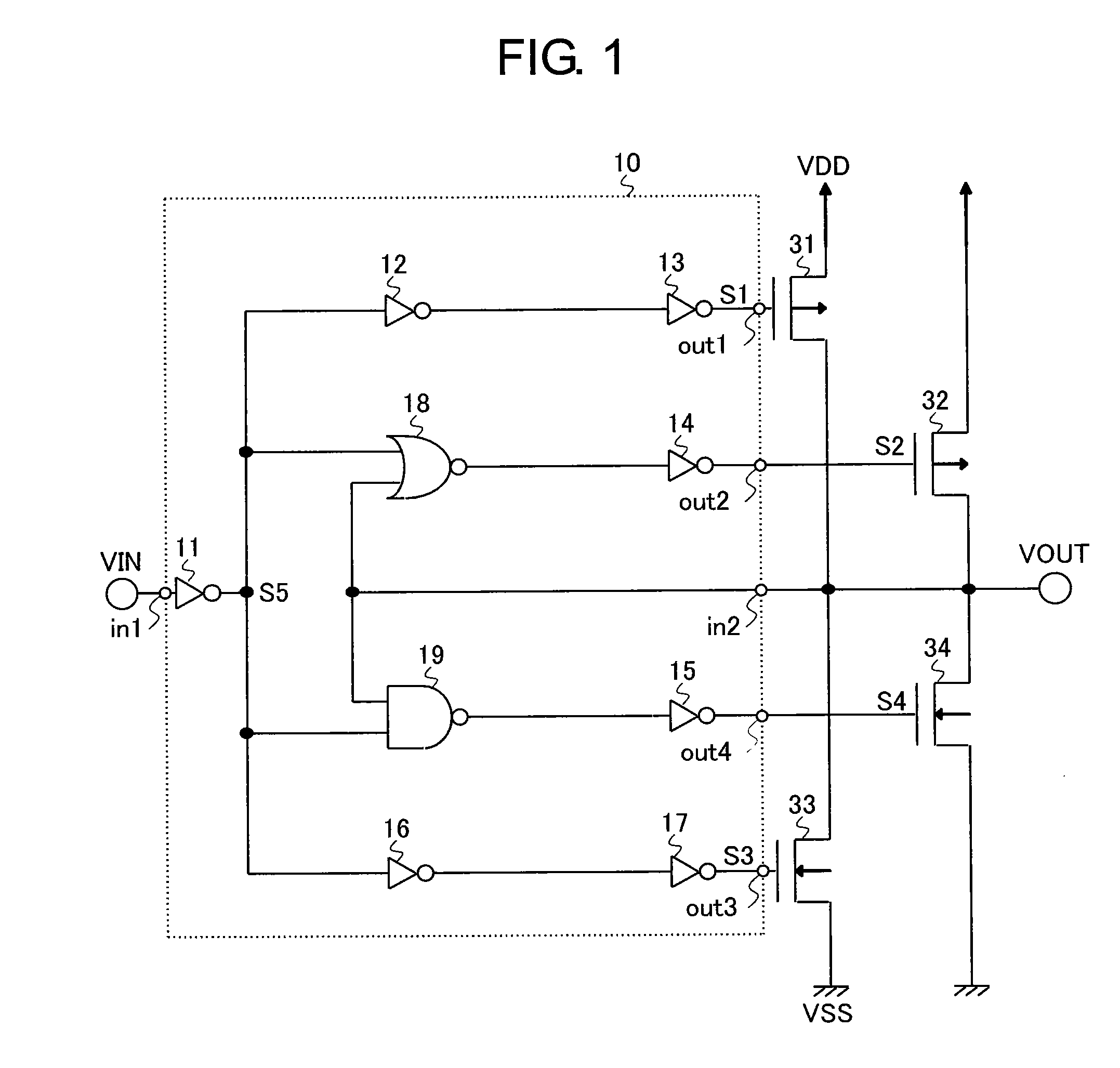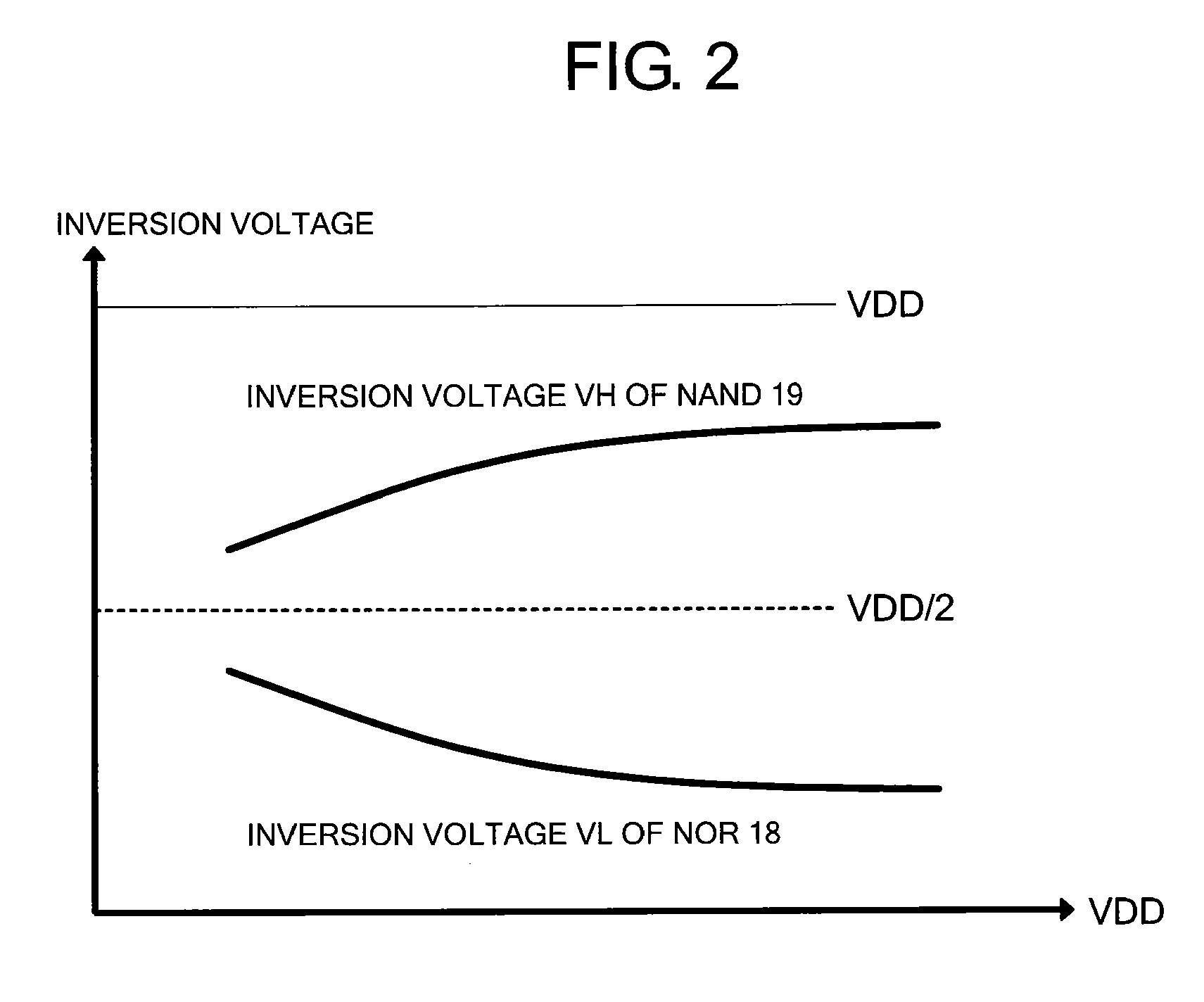Output buffer circuit
a buffer circuit and output technology, applied in the field can solve the problems of low response speed of output buffer circuits, and achieve the effect of reducing output noise and less influence on output nois
- Summary
- Abstract
- Description
- Claims
- Application Information
AI Technical Summary
Benefits of technology
Problems solved by technology
Method used
Image
Examples
embodiment
(1) Outline of Embodiment
[0036]In an output buffer circuit of this embodiment, in the same way as in the conventional art, the driving ability of a logic circuit that drives a transistor in an output stage is designed to be smaller than that of an ordinary logic circuit, to thereby decrease the driving current from the logic circuit to a gate of the transistor in the output stage, and reduce a change amount of a gate voltage of the transistor in the output stage. Thus, a change amount of an output current of the transistor in the output stage is small, and the slew rate of the output voltage of the transistor in the output stage becomes gentle, and hence, output noise is reduced.
[0037]On the other hand, when the slew rate of the output voltage of the transistor in the output stage is rendered gentle with respect to the entire range in which the output voltage changes, there arises a problem of a delay of a response speed of the output buffer circuit.
[0038]In this embodiment, the fac...
first embodiment
[0040]First, a configuration of an output buffer circuit is described.
[0041]FIG. 1 is a diagram illustrating the output buffer circuit. FIG. 2 is a graph illustrating an inversion voltage.
[0042]The output buffer circuit includes a control circuit 10, PMOS transistors (PMOS) 31 and 32 that function as first transistors, and NMOS transistors (NMOS) 33 and 34 that function as second transistors.
[0043]The control circuit 10 includes inverters 11 to 17, a NOR 18, and a NAND 19. Further, a voltage input to the output buffer circuit is an input voltage VIN, a voltage output from the output buffer circuit is an output voltage VOUT, output voltages of the inverters 13 and 14, the inverter 17, and the inverter 15 are respectively voltages S1 to S4, and an output voltage of the inverter 11 is a voltage S5.
[0044]The inverters 13, 14, 15, and 17 of this embodiment function as a first logic circuit having a predetermined driving ability or less, and the NOR 18 and the NAND 19 function as a second...
second embodiment
[0086]Next, a second embodiment is described.
[0087]First, the configuration of an output buffer circuit is described.
[0088]FIG. 5 is a diagram illustrating an output buffer circuit. FIG. 6 is a diagram illustrating an inversion voltage.
[0089]The output buffer circuit includes a control circuit 40, PMOS transistors 61 and 62 that function as first transistors, and NMOS transistors 63 and 64 that function as second transistors.
[0090]The control circuit 40 has inverters 41 to 49, a NAND 51, a NAND 52, a NOR 53, and a NOR 54. Further, a voltage input to the output buffer circuit is an input voltage VIN, a voltage output from the output buffer circuit is an output voltage VOUT, output voltages of the inverter 43, the NAND 52, the inverter 49, and the NOR 54 are voltages S9 to S12, respectively.
[0091]The inverters 44 and 46 of this embodiment function as a third logic circuit.
[0092]A first input terminal in1 of the control circuit 40 is connected to an input terminal of the output buffer ...
PUM
 Login to View More
Login to View More Abstract
Description
Claims
Application Information
 Login to View More
Login to View More - R&D
- Intellectual Property
- Life Sciences
- Materials
- Tech Scout
- Unparalleled Data Quality
- Higher Quality Content
- 60% Fewer Hallucinations
Browse by: Latest US Patents, China's latest patents, Technical Efficacy Thesaurus, Application Domain, Technology Topic, Popular Technical Reports.
© 2025 PatSnap. All rights reserved.Legal|Privacy policy|Modern Slavery Act Transparency Statement|Sitemap|About US| Contact US: help@patsnap.com



